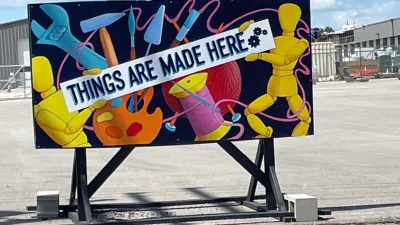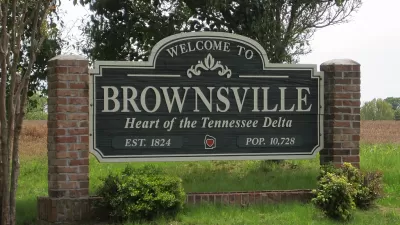The Brookings Institution mapped the proliferation of startup accelerators—an increasingly popular tool for economic growth.
As you might have heard, technology startups have become something of a hot item in economic development circles. Ian Hathaway describes how this dynamic of the new economy is playing out geographically:
A convergence of factors in information technology and capital markets have helped propel a boom in venture capital-backed startups in recent years. While well-established regions such as San Francisco-Silicon Valley, Boston-Cambridge, and New York account for the lion’s share of startup activity and funding, significant evidence suggests that a non-trivial amount of early stage capital is dispersing geographically throughout the United States.
According to Hathaway, the emergence of startup accelerators reflects the importance of technology startups to contemporary economic development strategies, defining these accelerators as entities that "support early-stage, growth-driven companies through education, mentorship, and financing in a fixed-period, cohort-based setting."
Hathaway provides additional information about how to distinguish accelerators from incubators, angel investors, and other kinds of startup-focused entities before providing a series of infographics to illustrate the widespread (i.e., beyond the Silicon Valley) adoption of the accelerator model.
FULL STORY: Accelerating growth: Startup accelerator programs in the United States

Study: Maui’s Plan to Convert Vacation Rentals to Long-Term Housing Could Cause Nearly $1 Billion Economic Loss
The plan would reduce visitor accommodation by 25,% resulting in 1,900 jobs lost.

North Texas Transit Leaders Tout Benefits of TOD for Growing Region
At a summit focused on transit-oriented development, policymakers discussed how North Texas’ expanded light rail system can serve as a tool for economic growth.

Why Should We Subsidize Public Transportation?
Many public transit agencies face financial stress due to rising costs, declining fare revenue, and declining subsidies. Transit advocates must provide a strong business case for increasing public transit funding.

How to Make US Trains Faster
Changes to boarding platforms and a switch to electric trains could improve U.S. passenger rail service without the added cost of high-speed rail.

Columbia’s Revitalized ‘Loop’ Is a Hub for Local Entrepreneurs
A focus on small businesses is helping a commercial corridor in Columbia, Missouri thrive.

Invasive Insect Threatens Minnesota’s Ash Forests
The Emerald Ash Borer is a rapidly spreading invasive pest threatening Minnesota’s ash trees, and homeowners are encouraged to plant diverse replacement species, avoid moving ash firewood, and monitor for signs of infestation.
Urban Design for Planners 1: Software Tools
This six-course series explores essential urban design concepts using open source software and equips planners with the tools they need to participate fully in the urban design process.
Planning for Universal Design
Learn the tools for implementing Universal Design in planning regulations.
City of Santa Clarita
Ascent Environmental
Institute for Housing and Urban Development Studies (IHS)
City of Grandview
Harvard GSD Executive Education
Toledo-Lucas County Plan Commissions
Salt Lake City
NYU Wagner Graduate School of Public Service




























